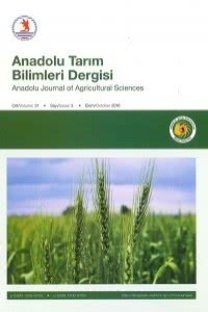İncirin döllenme biyolojisi
İncir çiçekleri,çiçek gözlerinin ilk belirmeye başladığı andan itibaren incir meyvesi olarak bilinen yuvarlak veya armudumsu şekildeki içi boş bir çiçek kılıfı (receptacle) içerisinde sıra sıra dizilmiş durumdadır. Bu sebeple incir çiçeklerinde tozlanma "anemophyl" ve "entomophyl" bitkilerin tozlanma özelliklerine benzememektedir, incirde tozlanma; yıl içerisinde üç generasyon meydana getiren Blastophaga psenes ile yine yıl içerisinde üçer doğuş meydana getiren erkek ve dişi çiçekler arasındaki özel bir ilişkiye dayanmaktadır. İncir (Ficus carica) çiçekleri uzun stilli dişi çiçekler, kısa stilli dişi çiçekler (gal çiçekleri) ve erkek çiçekler olmak üzere üç çiçek tipinden meydana gelmektedir. Bunlardan uzun stilli dişi çiçekler gerçek incir meyvesini, erkek çiçekler polenleri oluşturmakta, gal çiçekleri ise Blastophaga psenes'in larvalarının çiçeğin embriyosu ile beslenip büyümesine hizmet etmektedir.
The fertilization biology of fig (Ficus curica L.)
Fig flowers are in a state of order in a found as pear-shaped receptacle which is known as fig fruit after bud initiation. For thin season, pollination in fig flowers are different from the other plants. Pollination in fig plants is based on a special relationship between Blastophaga psenes, male and female flowers which have three generations in a year. Fig flowers consist of three flowers types namely, long-styled flowers, short-styled flowers and male flowers. Long-styled female flowers produce real fig fruit while male flowers produce pollens. On the otherhand, short-styled flowers are known to serve the larvae of Blastophaga psenes for feeding and growing by using the embriyo of the flowers.
Keywords:
flowers, biology, fertilization, pollination, figs, pomology,
___
- ISSN: 1300-2988
- Yayın Aralığı: Yılda 3 Sayı
- Başlangıç: 2018
Sayıdaki Diğer Makaleler
Bal arı (Apis mellifera L.)'sında feromon ve enzim üretimi
Kafkas arısının (Apis mellifera caucasica G.) bazı biyolojik ve davranış özellikleri
Tuzlu taban suyunun sulamalarda tekrar kullanımı için bir hesaplama yöntemi
Sezgin UZUN, Fikret ÖZKARAMAN, Dilek MARANGOZ
A. Vaiz GARİPOĞLU, B. Zehra SARIÇİÇEK
Değişik uygulamaların kivi tohumlarının çimlenmesi üzerine etkileri
Erciş ve Muradiye'de (Van) yetiştirilen cevizlerin seleksiyon yoluyla ıslahı üzerinde araştırmalar
Turan KARADENİZ, Z. Seval ÇELİK
Karadeniz bölgesinde ısıtmasız plastik serada bazı sebzelerin verim, erkencilik ve kalite kriterleri
Aydın APAYDIN, Nejdet KAPLAN, Hayati KAR, Cengiz ÖZDEMİR
